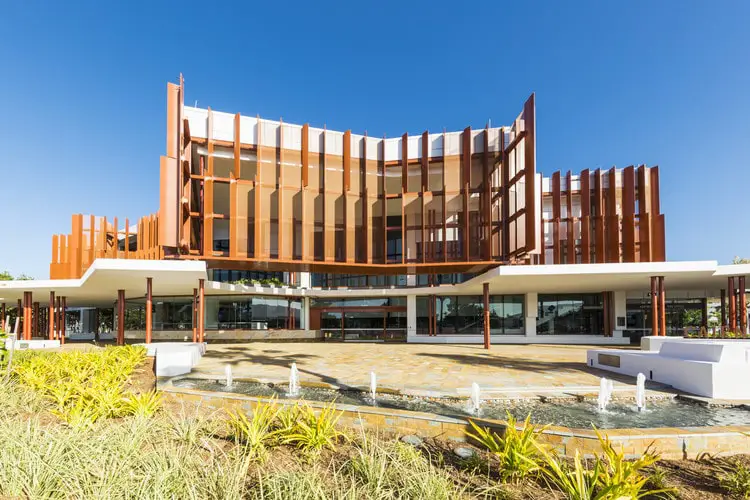Cairns Performing Arts Centre Information
The Cairns Performing Arts Centre opened its doors in December 2018, but the site is steeped in a rich history of community involvement and arts.
Cairns had only been founded eight years when the first need for a community hall was felt. The Council was asked to build a hall that would cost around 1,000 pounds. This was just the beginning of an epic story that culminated in the construction of Cairns Civic Theatre.
The Lands Administration of Brisbane officially accepted in 1963 that the former annexed southern land would be transferred to Mulgrave for the construction of a civic center.
The Civic Centre Project began in 1971. In 1973, a time capsule that was placed into the Centenary Peace Column of the Sheridan Street Theatre to celebrate its completion was installed. The capsule includes a history about people who served during World War II, 51st RQR and the mayor of that time, as well as other notable Cairns residents.
Gough Whitlam officially opened the theatre on May 31, 1974. Cairns, with a population of less than 40,000 people, was proud to have the first purpose-built theater in regional Queensland.
The Cairns Choral Society performed The Phantom of The Opera at the Civic on January 30, 2016. The theatre was demolished in order to build the new performing arts center. The RSL was consulted before the Peace Column and time capsule were removed. They will be incorporated in the foyer of the Cairns Performing Arts Centre, which is scheduled to open in 2073.
The construction was completed in 2018, and the official opening of Symphony for Tomorrow took place on 15 December that year.
The Cairns Performing Arts Centre was a joint initiative of Cairns Regional Council, the Queensland Government through Arts Queensland and the Australian Government.
Munro Martin Parklands
Munro Martin Parklands have been Cairns’ cultural heart for the last 100 years. The park has been renamed several times, used as a control centre and hosted many sporting and social activities.
Six years after Cairns’ founding, in 1882, the park was used by sports groups to play cricket, tennis, run and then cycle. The reserve was expanded in 1889 with the closure of Florence Street, and the addition to the land opposite where CPAC is now located. It was renamed Norman Park in 1890 to coincide with the visit of Queensland Governor Sir Henry Wylie Norman.
From 1890 to 1920, the ground was used for numerous community events and sporting activities. These included the first ANZAC Commemoration Service in 1916 and the inaugural rugby league match in 1918. In the 1920s, most sporting events (except cycling) moved to Parramatta Park.
During World War II the park was converted into a command centre for the defence forces. Over 40 buildings were constructed, including a radio mast, an air raid shelter, and accommodation huts. The park housed several small military units, including C Company 15th Garrison Battalion that protected infrastructure.
The northern end of the park was significantly beautified in 1954 thanks to a bequest by Margie Hart Martin. She is the niece of Janet Taylor Munro, Margaret Martin and Janet Taylor. Munro Martin Park was officially established in 1956. On September 21, an obelisk in the center was built. The memorial was dedicated in honor of the two half-sisters’ philanthropic contributions.
The Scouting Association leased the Defence Control Room, the last wartime building that remained, in 1973. In 1982, the fibreglass “scout’s hat” was placed atop the building.
Cairns Regional Council began work in 2015 to transform the park, including the introduction of an outdoor performance area and the vine-covered arbours we see today. Munro Martin Parklands reopened officially on Friday, 19 August 2016 with Opera Queensland’s Barber of Seville.





